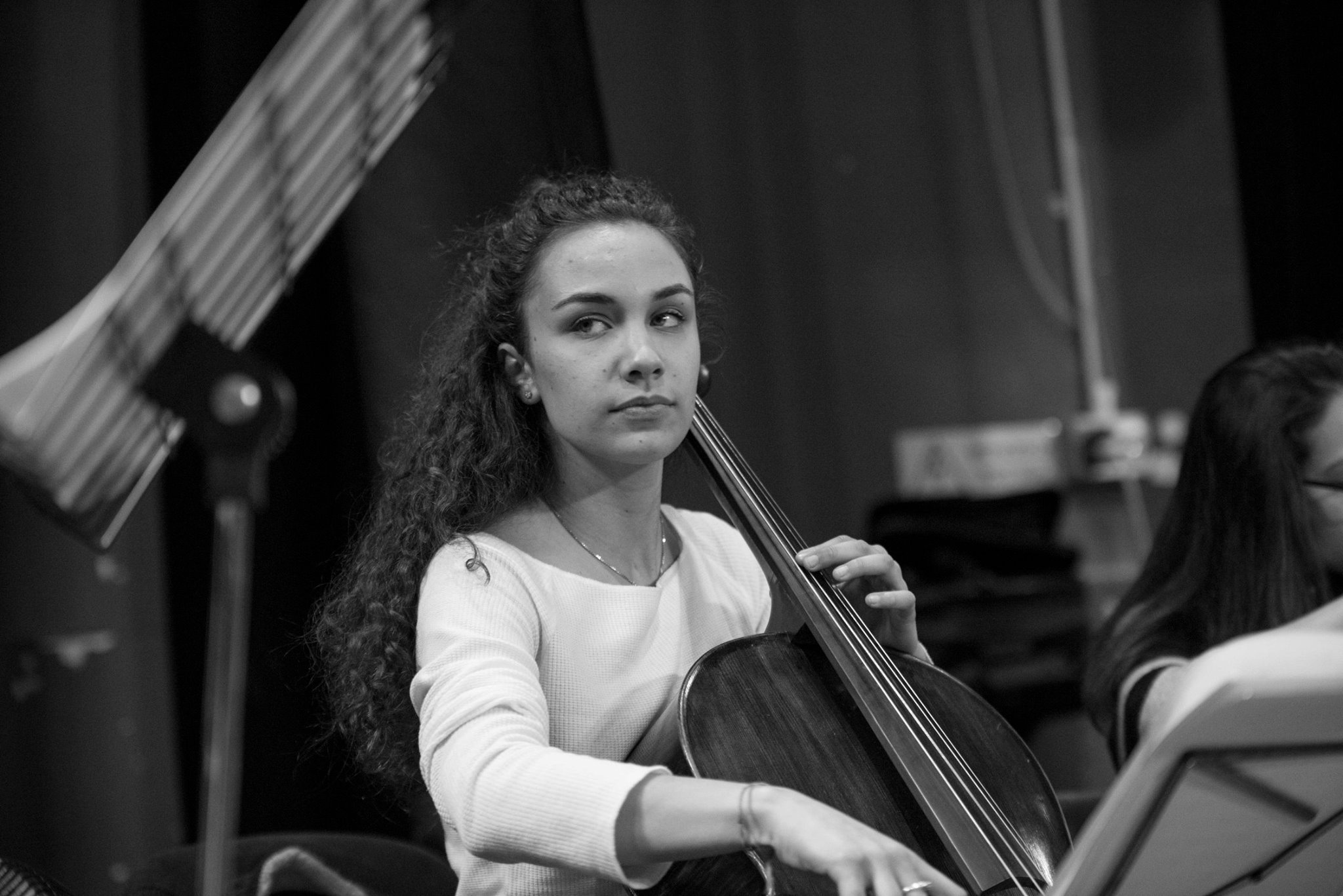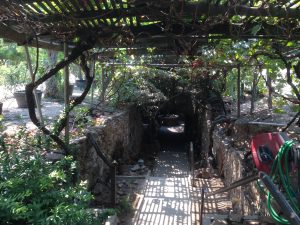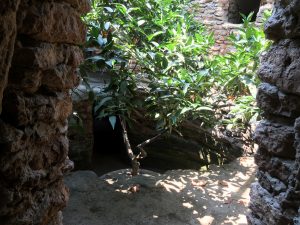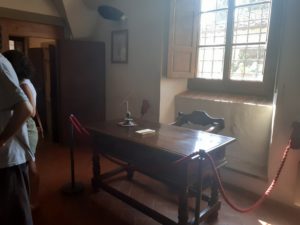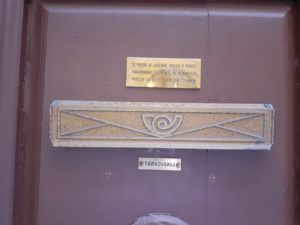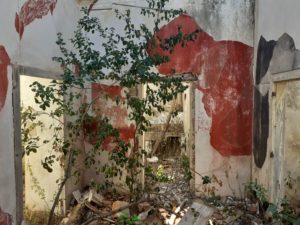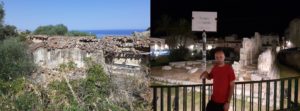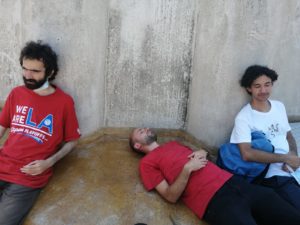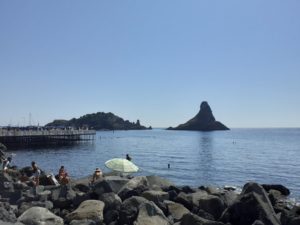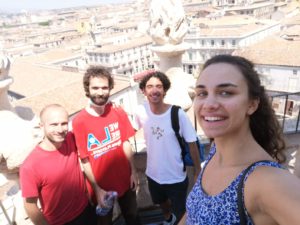16/01/2023
Trento, Italy
Reflections On the Italian Educational System: An American Perspective
Having not only lived in Italy as an American since September 2019, but having also studied and worked here continuously since my arrival, I feel it quite appropriate to comment on recent developments having to do with Elin and Benny Mattsson’s letter about the state of Italian education. Before I do this, however, I would like to briefly outline my background in order to show why I may be qualified (perhaps in a limited sense—I admit) to offer some thoughts on the situation.
My professional background is in English literature and creative writing, both of which I studied extensively at US universities. Apart from my B.A. in the subject, I also received an MA in English (with an emphasis in Rhetoric and Composition), along with an MFA in Creative Writing (with a concentration in poetry). After my postgraduate studies, I taught at San Bernardino Valley College in California for a year and a half as an adjunct professor, until May 2019. In the fall of that same year, I arrived in Italy to begin my laurea magistrale in International Cooperation in Human Rights and Intercultural Heritage at the University of Bologna (campus Ravenna), from which I graduated in 2021 with a score of 110/110.
During this time, I worked extensively at different Ravenna public schools as a madre lingua on short-term contracts. Needing something more permanent, I relocated shortly thereafter to Trento and secured a job teaching English at a private school called MyES.
Due to my lengthy sojourn and my varied experiences in Italian educational institutions (high school, middle school, elementary, and university), I can confidently state that much of what Elin and Benny have described in their letter is unfortunately (and I very much stress that word) true. Unfortunately, teaching methodologies and materials are often not up to par. Apart from the didactic component, the disciplinary problem they mention is highly relevant, and may stem, paradoxically, from the fact that it is not the students themselves who are poorly behaved, but that they are reacting to a largely obsolete system (at least in relation to highly developed countries) based on clearly delineated hierarchies—the teacher, never to be questioned, challenged, or engaged on equal terms, and the student, docile, meek, subservient and clearly inferior to the teacher. I have seen this scenario play out too many times in different educational settings here in Italy—both witnessing the phenomenon as a madre lingua in the Italian public schools and experiencing hierarchical limitations first-hand during my university studies.
Indeed, there is and should be a difference between educators and students, and the claim here is not that students know more than teachers (although they sometimes do), but that in comparison to the US, for example, the act of challenging professors (in a healthy intellectual way) is not only seen as academically productive, but such behavior is also encouraged. Professor routinely show up in casual clothing to emphasize the lack of formality, and some even encourage students to address them on a first-name basis—such things are not only rare here, they are, in many cases, absolutely unheard of. According to The Office for Global Professionals and Scholars, which provides immigration services for Mass General Brigham Institutions, «Americans treat each other in an informal manner, even if there are big differences in age or social position. It is also common for employees or students to act casually with their professors and advisors; however, this is not a sign of disrespect …. Informality also extends in the way people dress and communicate with each other. Look at other people where you work as an indication of how you should dress.» The exact opposite approach is taken in Italy, where there are two different «styles» of communication, the so-called «everyday» style of general situations and the «high» style one must adopt with academics and other professionals. Having heard it first-hand from many Italian friends, the «high» style is elaborate, ceremonious, and intentionally diffident with respect to the «inferior» party, and knowingly overindulgent—in the most hedonistic sense—with respect to the «superior» party. In other words, ritual over substance, showmanship over skill, presentation over depth.
Many have criticized Elin’s and Benny’s letter, and in the spirit of critical thinking, they have gone the right way about it. For example, Giangiacomo Farina, director of Siracusa News, stated the following: “Simply, the Italian school system is very focused on teaching content and less on teaching structures and open-air playing spaces.” And this is precisely where the problem lies. From what I have personally witnessed, neither the Italian schools nor universities are largely interested in teaching students to think for themselves—to think critically. It is perhaps for these reasons that the most prestigious Italian university (and also the oldest in the world—Bologna—founded in 1088 by Irnerius) does not even crack the top 150 in the world. Thus, the system does not, in fact, fail because it does not work, or has never worked—no, the system fails precisely because it is outdated (and oftentimes even medieval).
The entry of students in the Natio Germanica Bononiae, the nation of German students at Bologna; miniature of 1497
In 2019, The Local ran an article called “‘Educational crisis’: Italy’s schools compare badly with the rest of Europe, study finds,” which cited data some of the following data: “only one in twenty Italian 15 year-olds is able to distinguish fact from opinion when reading a text on an unfamiliar topic.” Furthermore, “one in four has difficulty with basic reading comprehension, failing to identify the main idea within a medium-length text.” The article goes on to mention that “things have worsened in the last decade, as the country has dropped ten points when it comes to reading skills since 2009.” In light of the data, Michela Montevecchi, Vice-President of the Education Commission, has stated that Italy is “a country that isn’t thinking about the future. And further: “We are losing critical capacity, but our society isn’t dealing with it. Our children are less and less able to analyse the complex situations that they will find themselves facing,” she stated. The head of Italy’s teaching union (CGIL), Giuseppe Massafra, has echoed Montevecchi’s statement, saying that “the report confirms educational poverty is a national emergency.” These are just some of the criticism which have been leveled in recent years.
Countless studies have already shown that students need material relevant to their lives, things they are interested in talking about. Indeed, not only do they have the capacity to think for themselves, but, in fact, they want to think for themselves—they are eager to express their opinion about important issues related to what is happening in the world they live; many teachers inside the system, however, are more concerned about protecting their own authority, power, and image. They are more concerned with discipline than with education. Egos run high, and in a country where bella figura reigns supreme and decorum is king, it is more important to make sure that students follow all the proper codes of etiquette, rather than, perhaps, learn something new. Having witnessed those approaches time and time again, I eventually began trying different things in my own classes (always under the supervision of the head teachers); while the methods were not always successful, they did often reveal that the rebellion Elin and Benny have described almost always comes as a reaction to this off-putting hierarchical authority teachers impose (perhaps with good intentions of forming good, disciplined children). However, discipline is largely the job of the parent, not the teacher, and if the parents have already done a poor job at that, there is very little a teacher can do to change bad behavior, so it is better to focus on something else and perhaps try to win over problematic students not with yelling (God, how much of that I have seen), but perhaps some activity relevant to the lives of those students.
Despite the fact that Farina’s well-intentioned criticism falls short, it is, at the very least, polite. What surprised me most were the hostile reactions to the Elin and Benny’s letter. For example this comment by Rossano Sasso, a representative of the nationalist League party former education secretary, who said that he would not “take lessons from a Finnish painter.” This comment, astoundingly, represents the very hierarchy I have talked about: “I am Rossano Sasso, a qualified figure, and you, Elin Mattsson, are just some run-of-the mill painter, so sit down, be quiet, and take notes.”
In reality, I understand. Italians are proud people with a history that stretches back thousands of years, and when Marcus Aurelius was living up to the tenets of Plato’s ideal philosopher king (in this case emperor), Finland at that time was agrarian—to put it most politely.
So, yes, egos do run high, but perhaps a little too much so, because what Sasso has done is committed the classic ad hominem (that’s Latin, by the way) fallacy. You never attack the person—you always attack the argument. It does not matter if Mrs. Mattsson is a painter, a housepainter, or perhaps even an unemployed painter. She has made an argument that has obviously hit a nerve, which is why the response is so strong, I am assuming. I have encountered this kind of arrogance observing my lead teachers, both in the classroom and also as a student at the University of Bologna, where students, during exam sessions, where routinely belittled and even brought to tears—behavior that is unimaginable in any kind of US academic institution. Such actions would have been grounds enough to dismiss any educator, or at least reprimand them.
In addition to my own experiences, I have friends currently studying in Italy (I will not say where because their studies may be negatively affected by these statements). One friend has personally witnessed professors behaving in ways that are absolutely representative of the superior/inferior hierarchy I have mentioned. For example, during one exam session in 2021 (which I also happened to be watching on Zoom) a student (clearly nervous) had gotten flustered during an oral exam—he/she simply could not answer the question; it was clear, however, he/she knew the answer, but simply needed time. After answering some other inquiries not very successfully, he/she told the professor it was possible to answer the other one. The response was: “I don’t care what you know. The exam is over.” My friend and I were absolutely astounded because this was a student who had demonstrated excellence repeatedly throughout the course, and was now being punished for not answering questions with the proper decorum deemed worthy of “esteemed” professors.
The question is simple: Why have so many people attacked Elin and Benny? If ordinary individuals had done this, I might have understood the rude behavior, chalking it up to poor education and manners, but it seems that the ones at the very top are interested in silencing the debate with ad hominem attacks, because, clearly, there is truth in what she has written. And another more interesting question is the following: If the Italian education system is really as good as Mr. Sasso claims, then why does he not have the good sense to know that attacking and denigrating a person is not the way to win an argument? Again, you must defeat the argument, not the person, but clearly some teacher somewhere did not do his/her job, or perhaps the student may have forgotten.
There is, in fact, a term to describe Italy’s outdated education system, and it is called the “banking model of education,” famously postulated by the renowned Brazilian educator and social activist Paolo Freire in his book Pedagogy of the Oppressed.
Freire used the metaphor of the bank to describe a type of education system where the establishment of hierarchy is more important than actual education, meaning that teachers are simply interested in “depositing” large amounts of information into students—with no interest in critical thinking or self-reflection—and then “withdrawing” that information from students in exactly the same so-called amount they have “deposited” it. In other words, the formula is as follows: “I, the teacher, tell you exactly what I want you to know, and you, the student, repeat it to me exactly the way I told it to you.” Astoundingly, Mr. Farina’s criticism of Elin and Benny revealed precisely that this is how the Italian education system functions (“focused on teaching content and less on teaching structures”), and I am really not surprised that he admitted this, because some of my professors (along with my friends’ as well) have even stated that a student’s responsibility is to completely internalize what they have heard, and regurgitate exactly what they have internalized during the exam session. The problem, therefore, with the Italian education system, is as I have already mentioned—it is not that its methodology does not work, or has never worked; the problem is that it is outdated. While such a didactic approach may have been excellent in a class of four students, under the tutelage of Irnerius 1000 years ago, it does not work today.
For one, oral examinations, for example, are highly biased, and apart from being biased, they are unnecessarily tedious, in the sense that in some big classes, students are often forced to wait over five hours to sit their examination, because nobody knows how long each one will take (if you answer well, the exam is short; if you struggle, they will make you struggle—often with the good intention of finding questions that might allow you to pass). The more sadistic professors, however—and I have witnessed this personally—will deliberately ask obscure questions, intimidate, and obfuscate for reasons only God knows. The process is both unpredictable and unfair in many ways, because, by law, anybody is allowed to watch the examination, and grades are often given in public—no privacy whatsoever. Questions are arbitrary—some more difficult than others, and if you’re very lucky, professors might run out of ideas and repeat some questions (in the best case), or flat out ask something that may not have been covered (in the worst case)—and so, if you happened to be watching an exam at the right time, you might be in luck. It is survival of the fittest in the most barbaric, yet, paradoxically, intellectual sense. On the contrary, in the US, students are encouraged to use their own critical thinking skills—yes, they listen to lecture, yes, they pay attention, yes, they know who the professor is, yes, they know his level of intelligence, yes, they know the professor is the most “powerful” person in the room, but, at the end of the course, everyone is given the same objective standard to pass the class: Write an essay (with the freedom to challenge the professor’s point of view, if that’s what you want to do) using the class materials and create an original argument.
Fortunately, many within the Italian education system are beginning to come around to this view, and in the spirit of fairness and objectivity, I would like to say that I have witnessed plenty of those positive aspects as well. And so, I would like to take this time to praise those educators and professors with whom I had the pleasure of working for two years, and who are trying to buck the trends of tradition. Having now transitioned to a private school setting, it is indeed sad for me to admit that Italian public schools are, in fact, behind, although they are nevertheless much better than many inner city public schools in the US. The Achilles heel of Italian public school is certainly its teaching of English, which is why many private English schools such as ours continue to flourish—the public school system simply cannot provide the necessary, modern methodology. In this sense, the private sector has always been good at filling the void, which is why schools like MyES have become so successful here (almost every city in Italy—with a population of over 100,000—has one and there are four schools in Milan alone). Those who can pay come to us; those who cannot must, unfortunately, fall behind. One can only hope that this debate started by Elin and Benny will lead to real change, instead of continuous attacks on their character, background, and personality. One can only hope.
About David Garyan
David Garyan has published three chapbooks with Main Street Rag, along with (DISS)INFORMATION, a full collection with the same publisher. He holds an MA and MFA from Cal State Long Beach, where he associated himself with the Stand Up Poets. He received a master’s degree in International Cooperation on Human Rights and Intercultural Heritage from the University of Bologna. He lives in Trento.



